Research Projects
I study how human activities impact the global ocean and the earth's climate. I develop machine learning algorithms to analyze petabytes of satellite data (imagery, altimetry, AIS) and search for patterns of change in the physical world. I am a strong advocate of open source and open data!
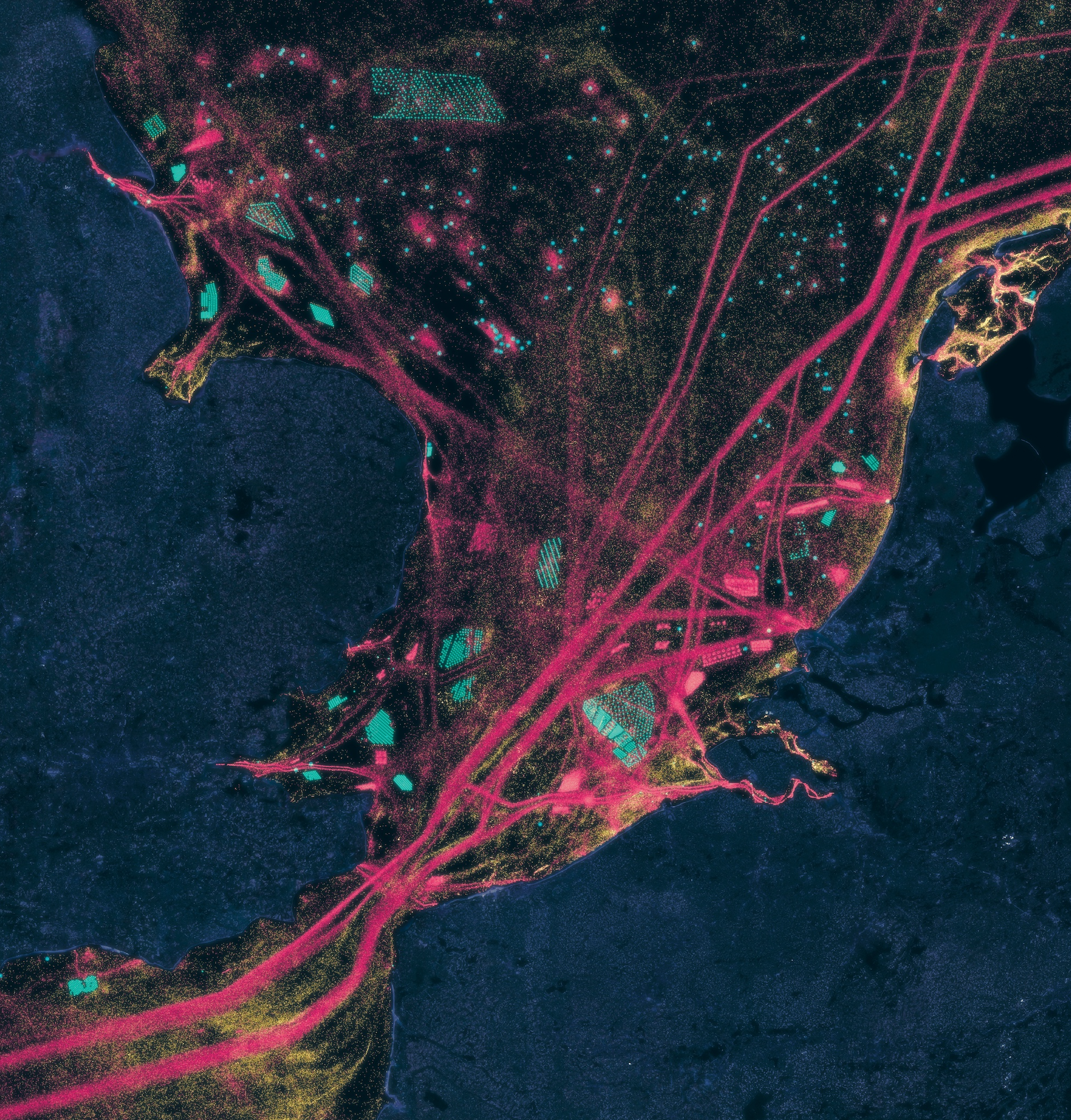
Ocean industrialization: Satellite mapping reveals extensive industrial activity at sea.
The world’s population increasingly relies on the ocean for food, energy production and global trade, yet human activities at sea are not well quantified. We combine satellite imagery, vessel GPS data and deep-learning models to map industrial vessel activities and offshore energy infrastructure across the world’s coastal waters from 2017 to 2021. We find that 72–76% of the world’s industrial fishing vessels are not publicly tracked, with much of that fishing taking place around South Asia, Southeast Asia and Africa. We also find that 21–30% of transport and energy vessel activity is missing from public tracking systems. Checkout the paper in Nature
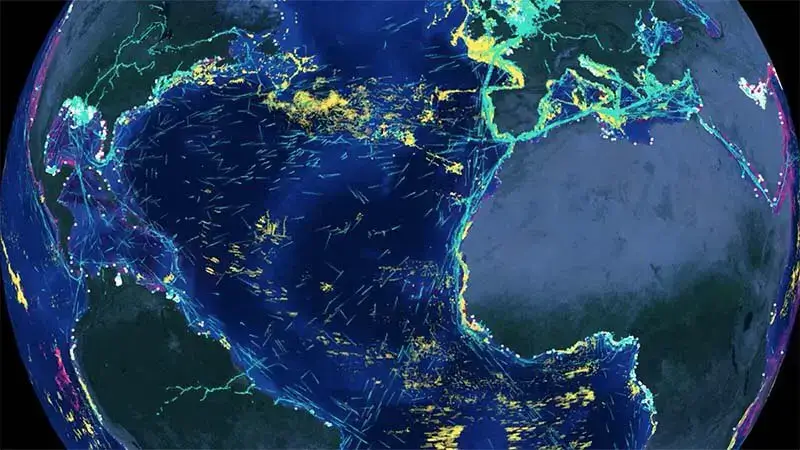
Open Ocean Project: Transforming ocean management by making the invisible visible.
When it comes to ocean governance, there lies a simple truth: We can't manage what we can't see. Most of the ocean has gone unobserved and unmapped—a world of unknown. And without a comprehensive picture of what goes on beyond the horizon, we are powerless to make meaningful change. But satellites are giving us eyes from space. Now, under the open ocean project, we will use these satellites to shine a light on all industrial human activity at sea–and make it freely available to the world. Checkout the project and watch the video
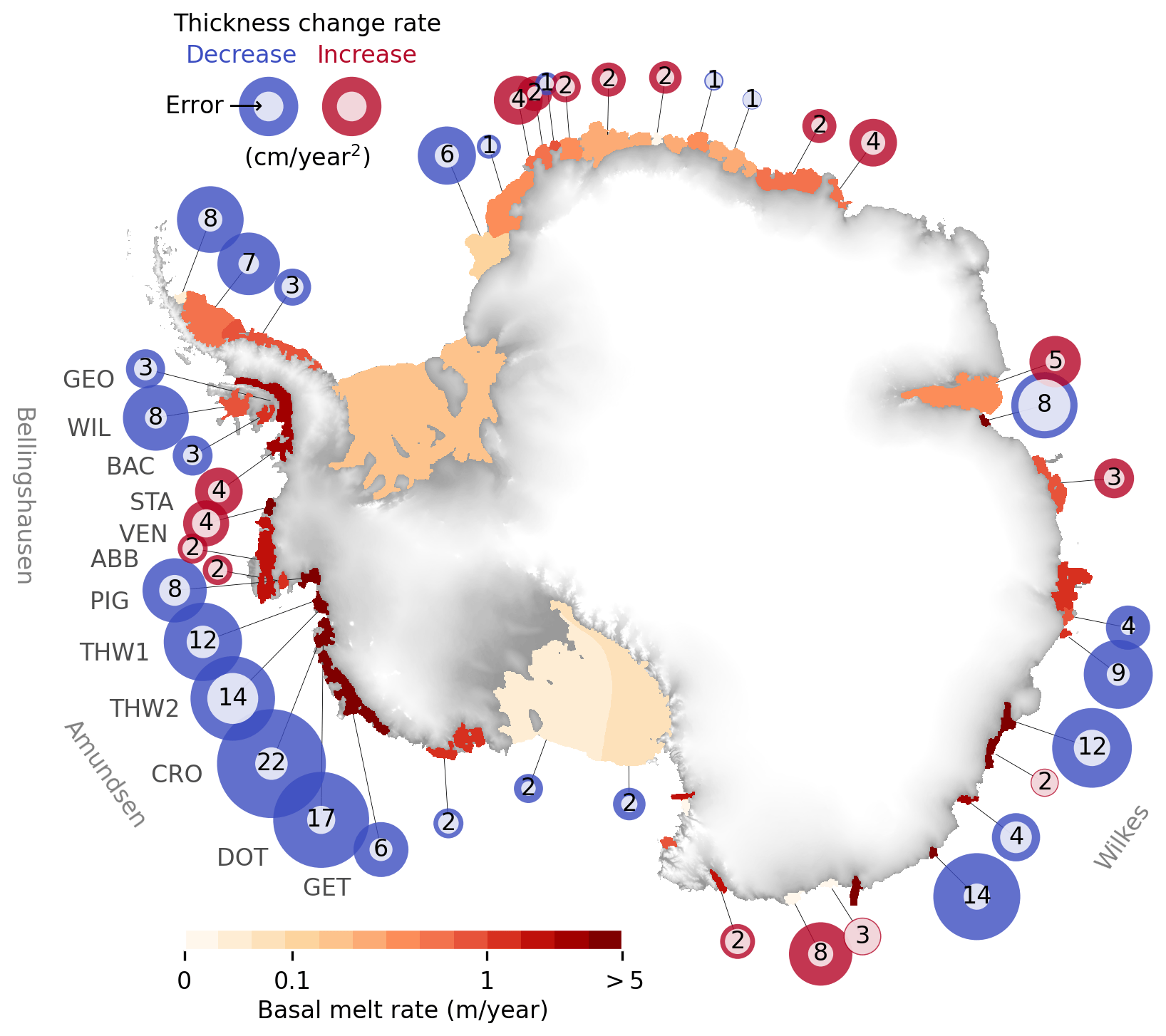
Ice shelf melting: Widespread slowdown in thinning rates of West Antarctic ice shelves.
Antarctica's floating ice shelves modulate discharge of grounded ice into the ocean by providing a backstress. Ice shelf thinning and grounding line retreat have reduced this backstress, driving rapid drawdown of key unstable areas of the Antarctic Ice Sheet, leading to sea-level rise. If ice shelf loss continues, it may initiate irreversible glacier retreat. We used 26 years (1992–2017) of satellite-derived Antarctic ice shelf thickness, flow, and basal melt rates to construct a time-dependent dataset of ice shelf thickness and basal melt. Our data revealed an overall pattern of thinning all around Antarctica. Checkout the paper
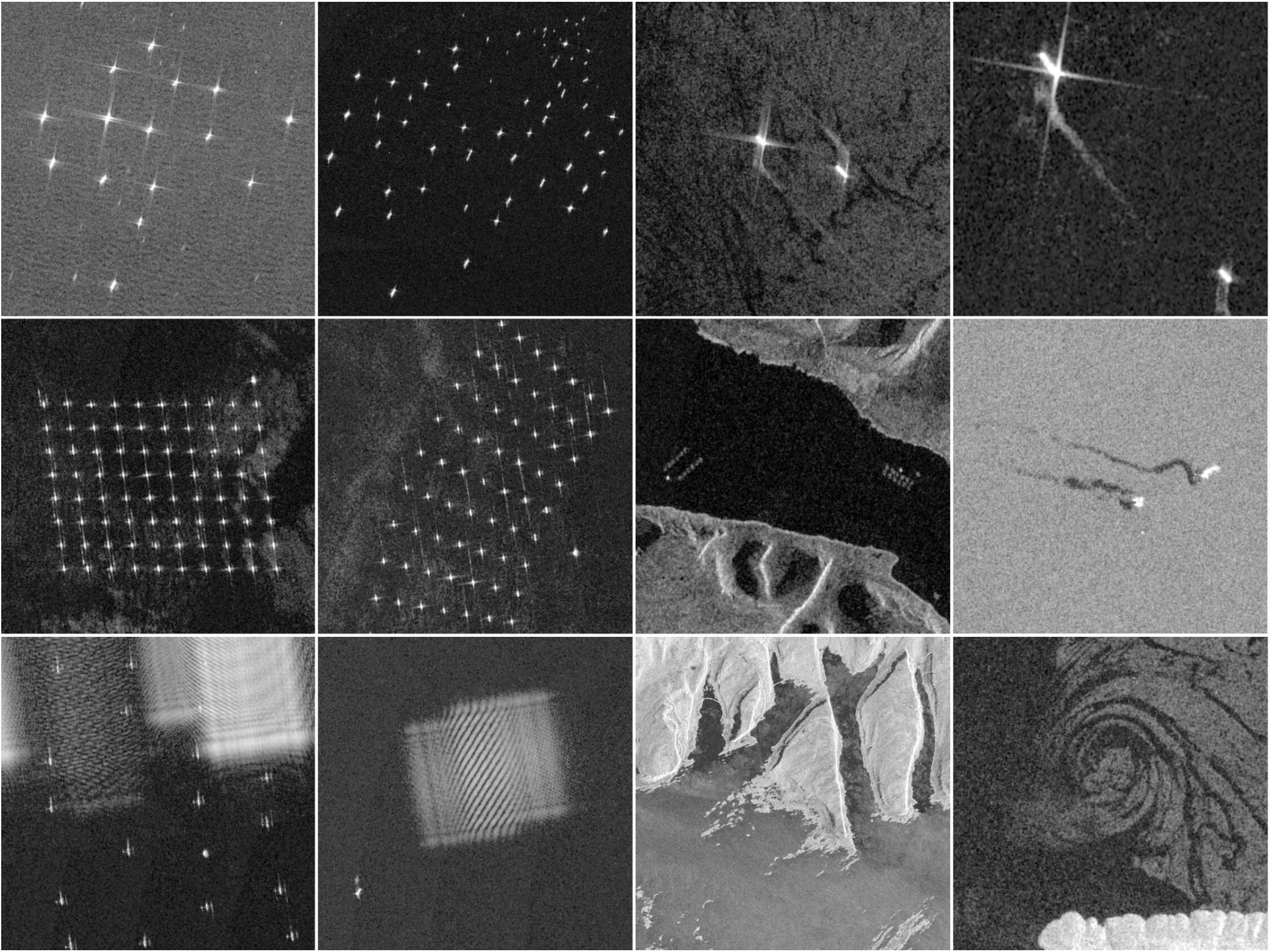
Fighting illegal fishing: Detecting Dark Fishing Activity Using Synthetic Aperture Radar Imagery and AI.
Unsustainable fishing practices worldwide pose a major threat to marine resources and ecosystems. Identifying vessels that do not show up in conventional monitoring systems—known as “dark vessels”—is key to managing and securing the health of marine environments. With the rise of satellite-based synthetic aperture radar (SAR) imaging and modern machine learning, it is now possible to automate detection of dark vessels day or night, under all-weather conditions. Checkout the paper

Dark vessel activity: Satellite radar imagery reveals vessels not broadcasting their position (orange) compared to vessels that appear in public monitoring systems (yellow).
Powered by petabytes of satellite data and machine learning, the first ever global map of previously undetected dark fleets is now available for free to anyone in the world with an internet connection, helping arm authorities, researchers and the public alike with the power to monitor vessel activity in all coastal waters, identify dark fleet patterns and build the necessary understanding to quantify threats to the ocean. See interactive map

Global vessel traffic: Billions of vessel positions from satellite AIS analyzed to reveal global traffic patterns.
Every day we download and process more than 20 million data points from satellite AIS, giving us the positions of hundreds of thousands of vessels in the world. This map shows all vessels carrying AIS, fishing and non-fishing, and is created from billions of GPS coordinates. You can see the shipping lanes crisis across the globe, and the hotspots (bright areas) along the coast with excessively high vessel activity. Read more

Computer vision challenge: Fighting illegal, unreported, and unregulated fishing with machine learning.
Many vessels engaged in IUU fishing and other criminal activity turn off their automatic identification system to evade detection. The xView3 Challenge is a global call for skilled developers to submit machine learning algorithms capable of automatically detecting and characterizing these "dark vessels" in synthetic aperture radar (SAR) satellite imagery. We have developed the largest publicly available SAR dataset for training machine learning models. Checkout the challenge

Ice sheet mass change: Integration of 16+ years of satellite laser altimetry measurements over Antarctica and Greenland.
State-of-the-art ice-sheet surface elevation change for Antarctica and Greenland since 2003, estimated from two NASA satellite laser altimetry missions (ICESat, 2003-2009; and ICESat-2, 2018-present). These very precise laser measurements allows us to study decadal and multi-decadal trends at unprecedented spatial resolution; providing an invaluable dataset for advancing ice-sheet data assimilation efforts into climate models and for disentangling the causal mechanisms responsible for ice-sheet mass change and consequent sea-level rise. Checkout the paper in Science
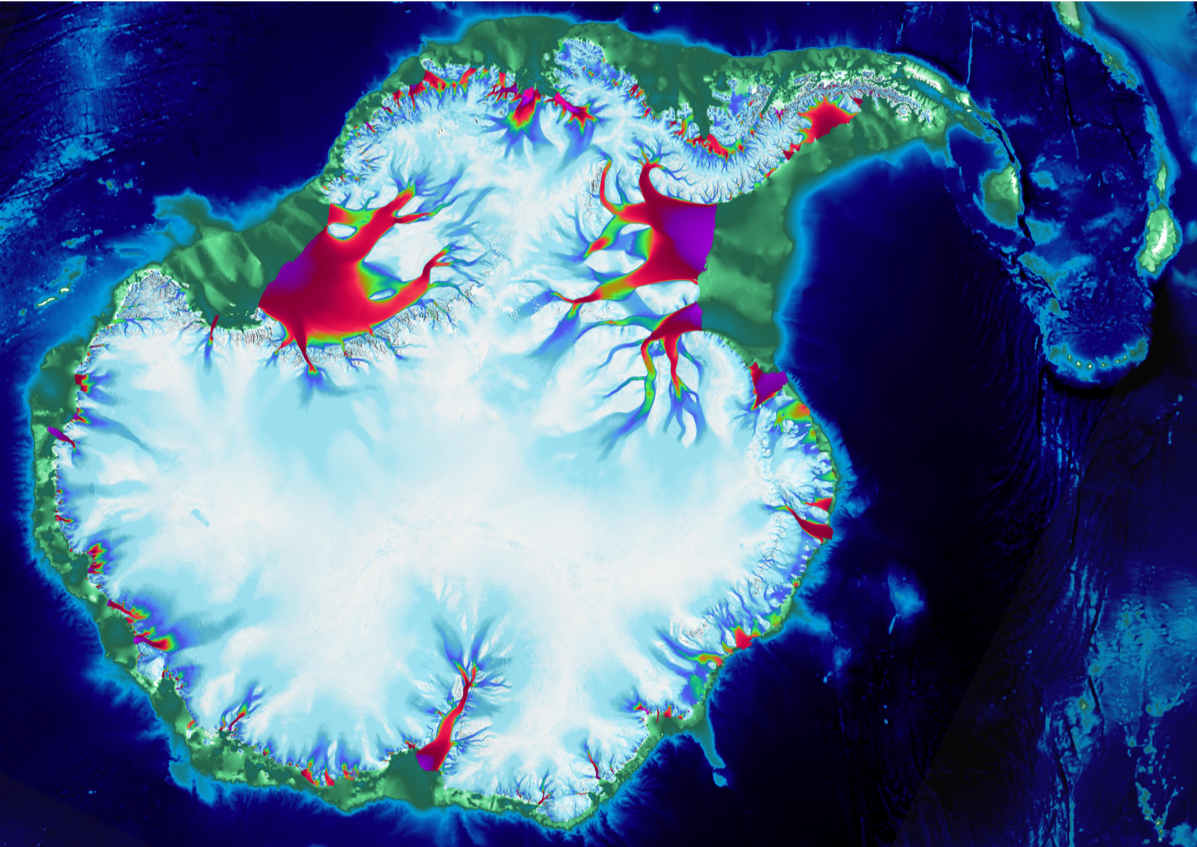
Ice sheet flow: NASA MEaSUREs Inter-mission Time Series of Land Ice Velocity and Elevation (ITS_LIVE).
We will accelerate ice sheet and glacier change research by producing a globally-comprehensive and temporally dense multi-sensor record of land ice and ice shelf velocity and elevation, updated in near-real time as new data become available. Such a record is not presently available to the community, slowing scientific discovery from these information-rich data streams. Checkout the project
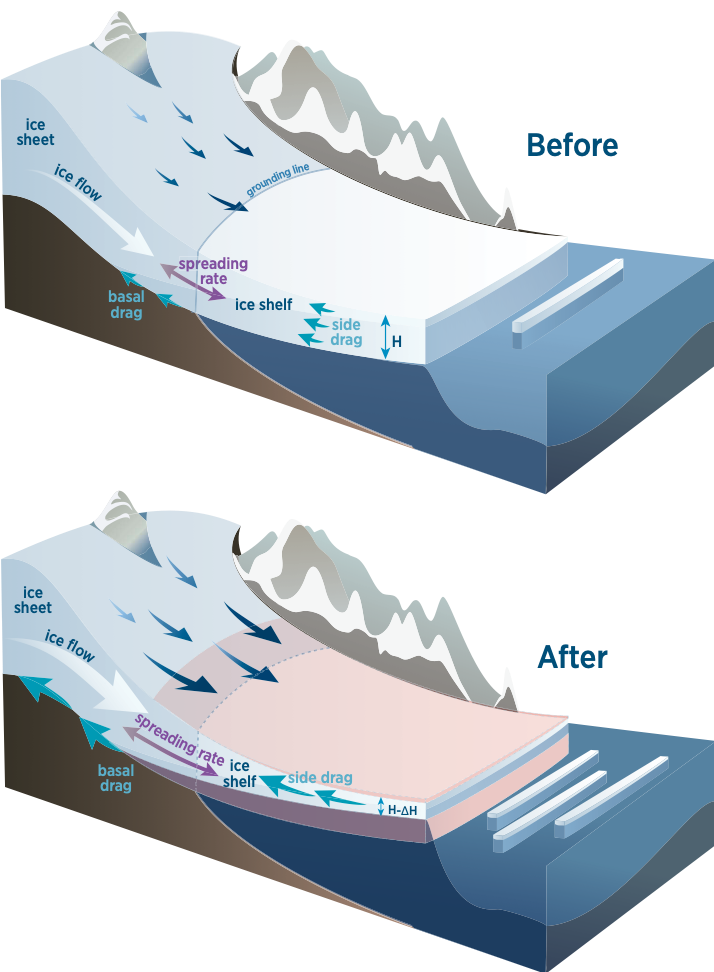
Ice shelf dynamics: Instantaneous Antarctic ice sheet mass loss driven by thinning ice shelves.
Confined ice shelves restrain the flow of upstream ice streams and glaciers. Thinning of ice shelves increases the longitudinal stress and with it the spreading rate at the grounding line (GL). This effect transmits some distance upstream, and the net results is an increase in ice flux across the GL. (a) Ice shelf thickness (H) and ice flow prior to onset of ice shelf thinning. (b) Onset of ice shelf thinning (thickness loss in red) reduces buttressing and increases both longitudinal spreading and ice flux across the GL, speeding up glacier discharge into the ocean. Checkout the paper in GRL
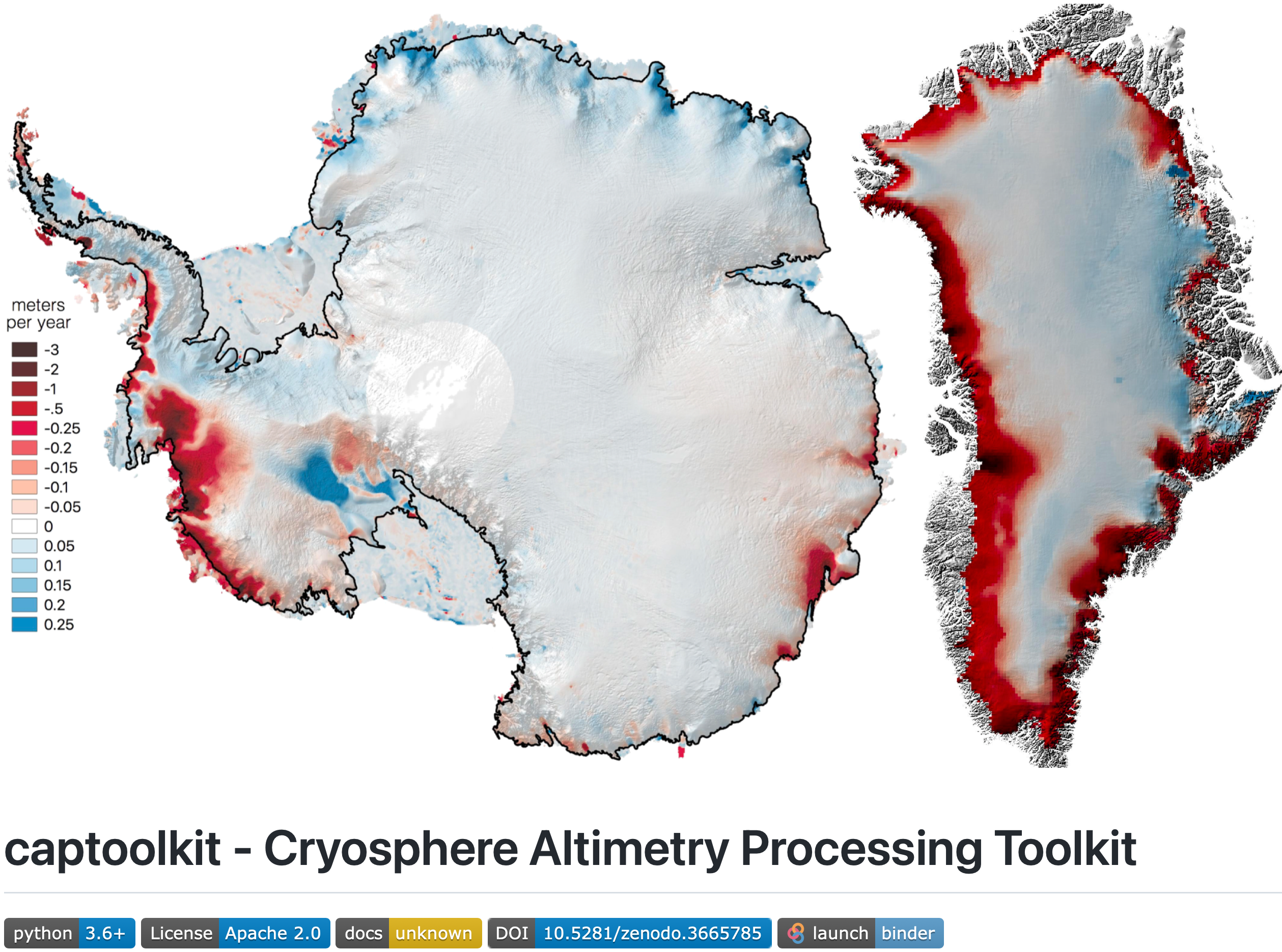
Scientific software development: JPL Cryosphere Altimetry Processing Toolkit (a Python package).
Set of Python tools for processing and integrating multi-satellite and airborne altimetry data. Authors: F. Paolo (Lead developer), J. Nilsson and A. Gardner. Checkout the project
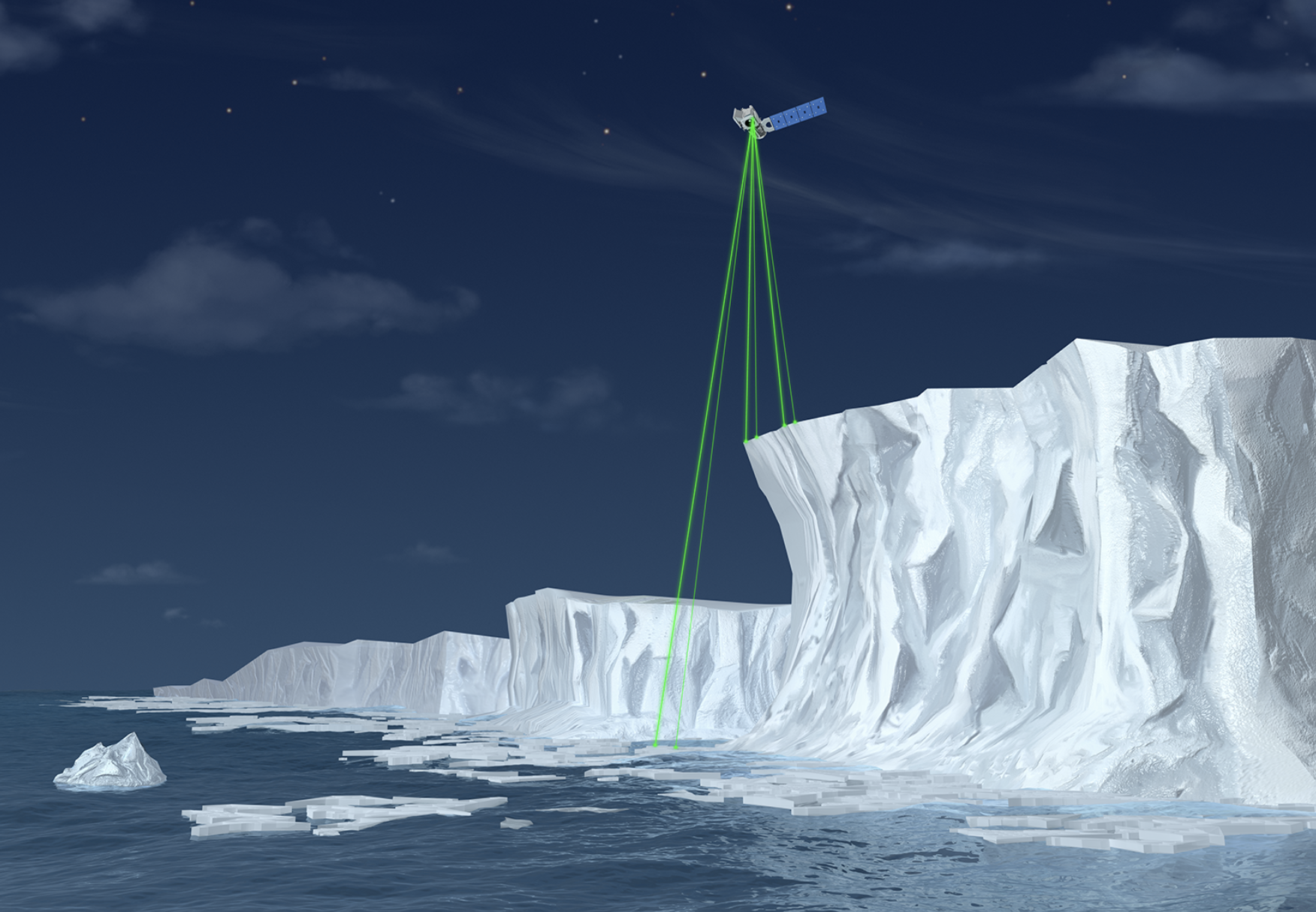
ICESat-2 laser mission: NASA Ice, Cloud and Elevation Satellite 2.
The ICESat-2 will measure the height of a changing Earth, one laser pulse at a time, 10,000 laser pulses a second. Launched September 15, 2018, ICESat-2 carries a photon-counting laser altimeter that will allow scientists to measure the elevation of ice sheets, glaciers, sea ice and more - all in unprecedented detail. Our planet's frozen and icy areas, called the cryosphere, are a key focus of NASA's Earth science research. ICESat-2 will help scientists investigate why, and how much, our cryosphere is changing in a warming climate. The satellite will also measure heights across Earth's temperate and tropical regions, and take stock of the vegetation in forests worldwide. Read more
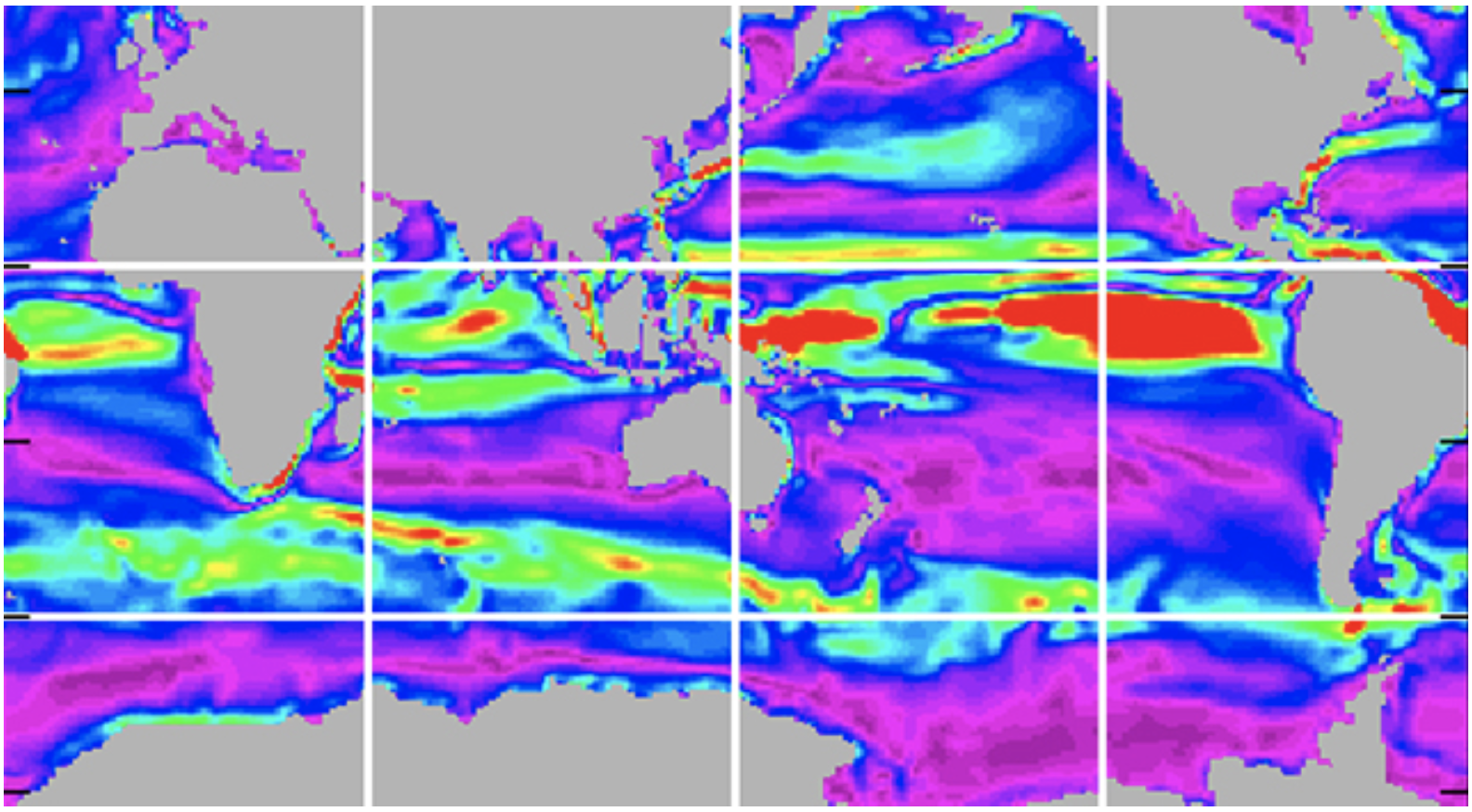
Global ocean circulation: Estimating the Circulation and Climate of the Ocean (ECCO).
The ECCO consortium is directed at making the best possible estimates of ocean circulation and its role in climate. Solutions are obtained by combining state-of-the-art ocean circulation models with nearly complete global ocean data sets in a physically and statistically consistent manner. Products are being utilized to understanding ocean variability, biological cycles, coastal physics, and geodesy, and are available for general applications. Read more
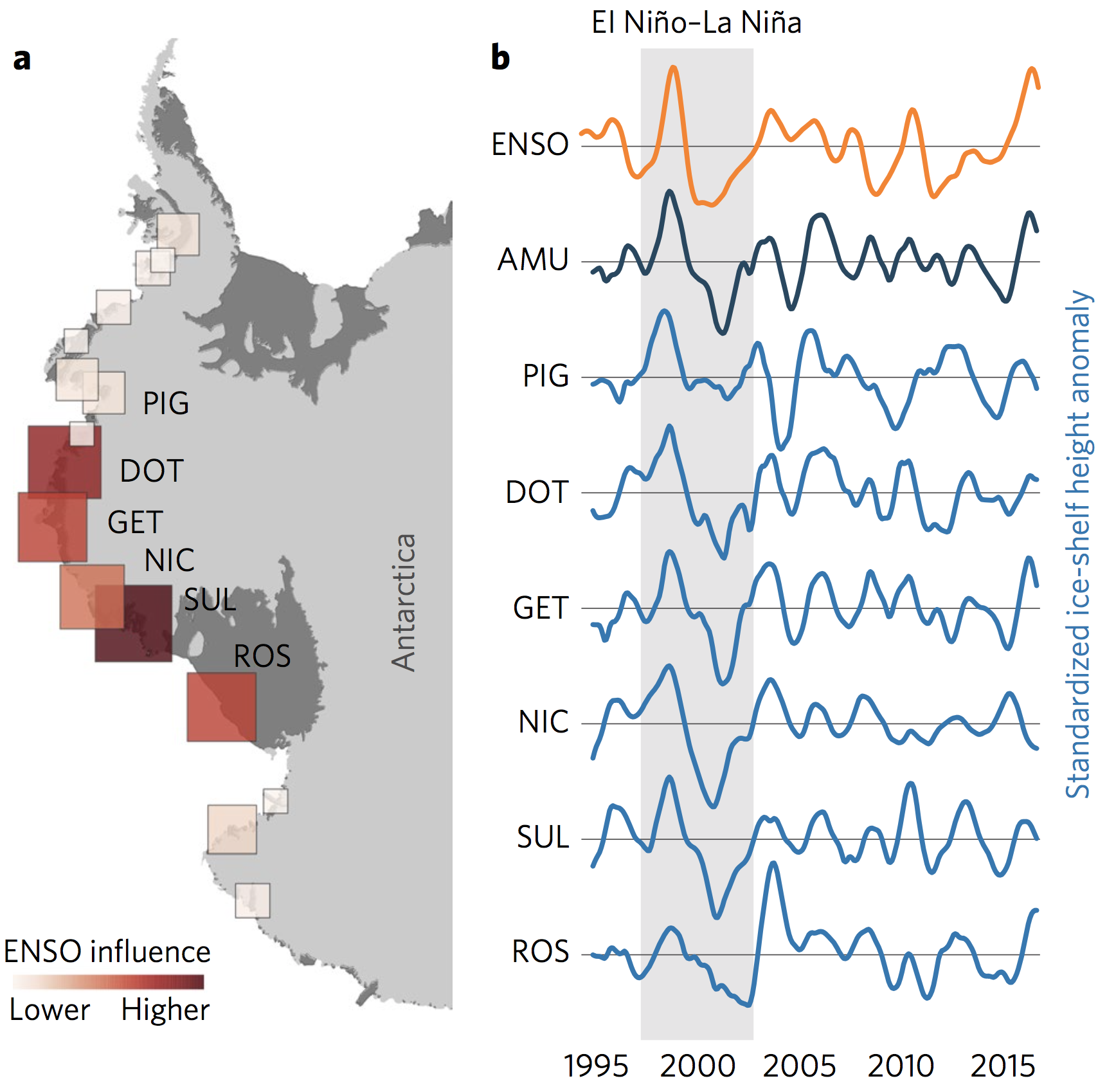
Ice & climate variability: Investigating how the Antarctic ice shelves respond to climate variability such as El Niño/Southern Oscillation.
Relative influence of ENSO along the Antarctic Pacific margin. (a) Regional variation of the similarity index (size and color of squares) between ice-shelf height-anomaly records and the time-integrated Oceanic Niño Index (ONI). (b) 12-month running integral of ONI (that is, ENSO) lagged by ~6 months (top plot) and 12-month running means of ice-shelf height anomalies for the combined Amundsen (AMU) ice shelves and six individual ice shelves; the shaded area highlights the large height change resulting from the 1997–2001 El Niño-to-La Niña transition. Checkout the paper in Nature Geo
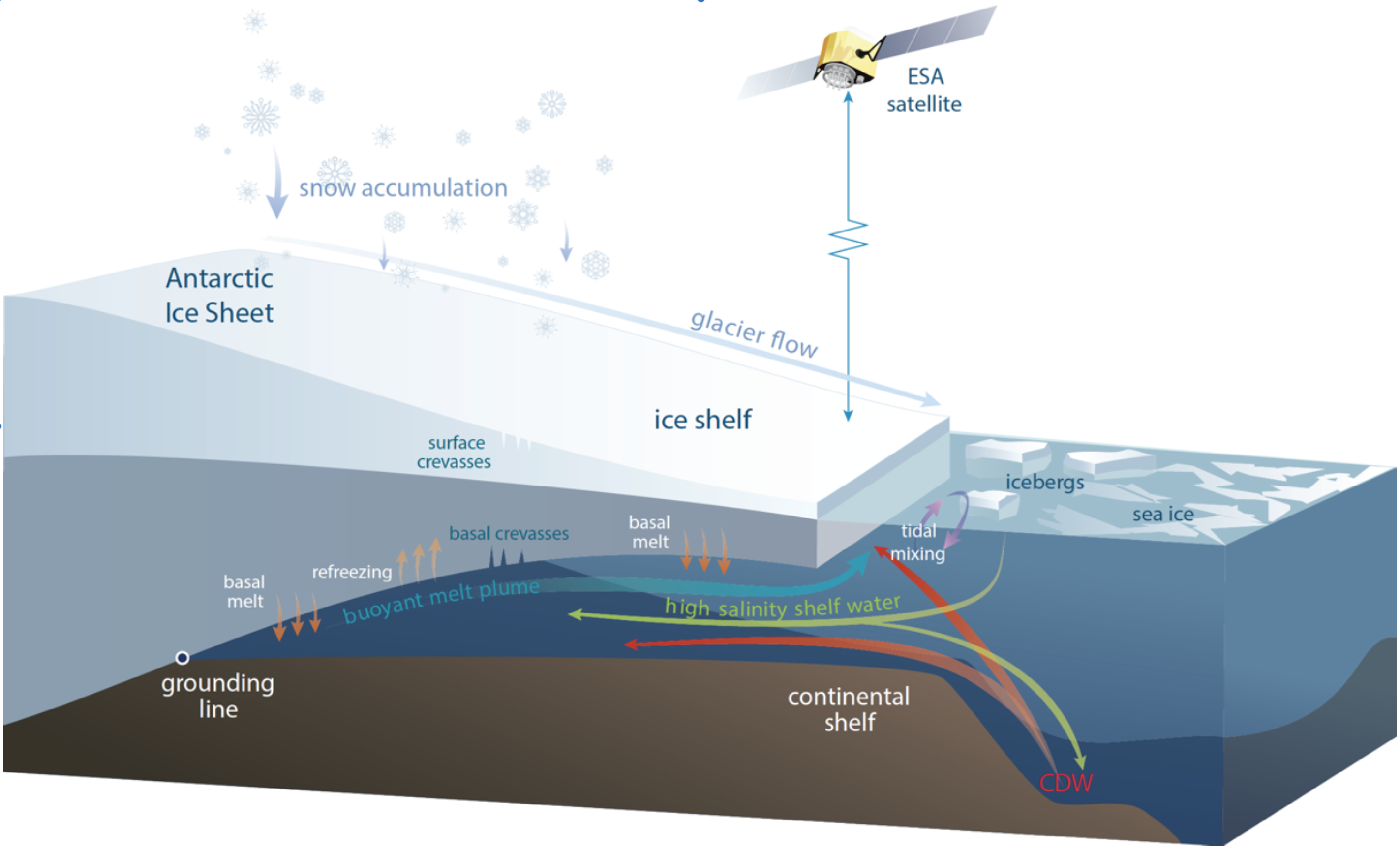
Laser & radar satellites: Multi-sensor analyses of Antarctic ice shelf response to climate variability.
Developing a detailed history of Antarctic ice-shelf mass and stress changes on seasonal-to-interannual time scales and small spatial scales; improve our understanding of the environmental processes that cause these changes; and assess whether proxies for variability of the ice-shelf mass budget can be obtained from coarse-grid global climate models (GCMs). Our main data sources for this study are: ICESat laser altimeter data (2003-2009); Operation IceBridge (OIB) airborne laser altimeter and radio echo sounding (RES) ice thickness data (2009-present); CryoSat-2 radar altimeter (RA) data (2010-present); and European Space Agency (ESA) RA satellites ERS-1, ERS-2 and Envisat (1992-2012).

Multi satellite data fusion: Constructing long-term continuous time series of ice-shelf height change from multiple satellite altimeters.
Representation of our multi-referenced time series approach. (Left) individual time series of cumulative change. (Right) diagram representing the matrix formed with the time series on the left (one time series per row). From top to bottom is depicted the process of forming single-grid-cell frequency-average time series. Checkout the paper in Remote Sens. Environ.

Ice shelf volume change: Multi-mission satellite altimetry to investigate long-term trends and variability in Antarctic ice-shelf thickness.
Eighteen years of changes in the Antarctic ice shelves. Color map is rate of thickness change, circles are percentage thickness gained or lost, time series are mean ice-volume change over 18 years. There is considerable variability in the height-change signal, and trends on short time intervals are not representative of the underlying decadal trends. Checkout the paper in Science
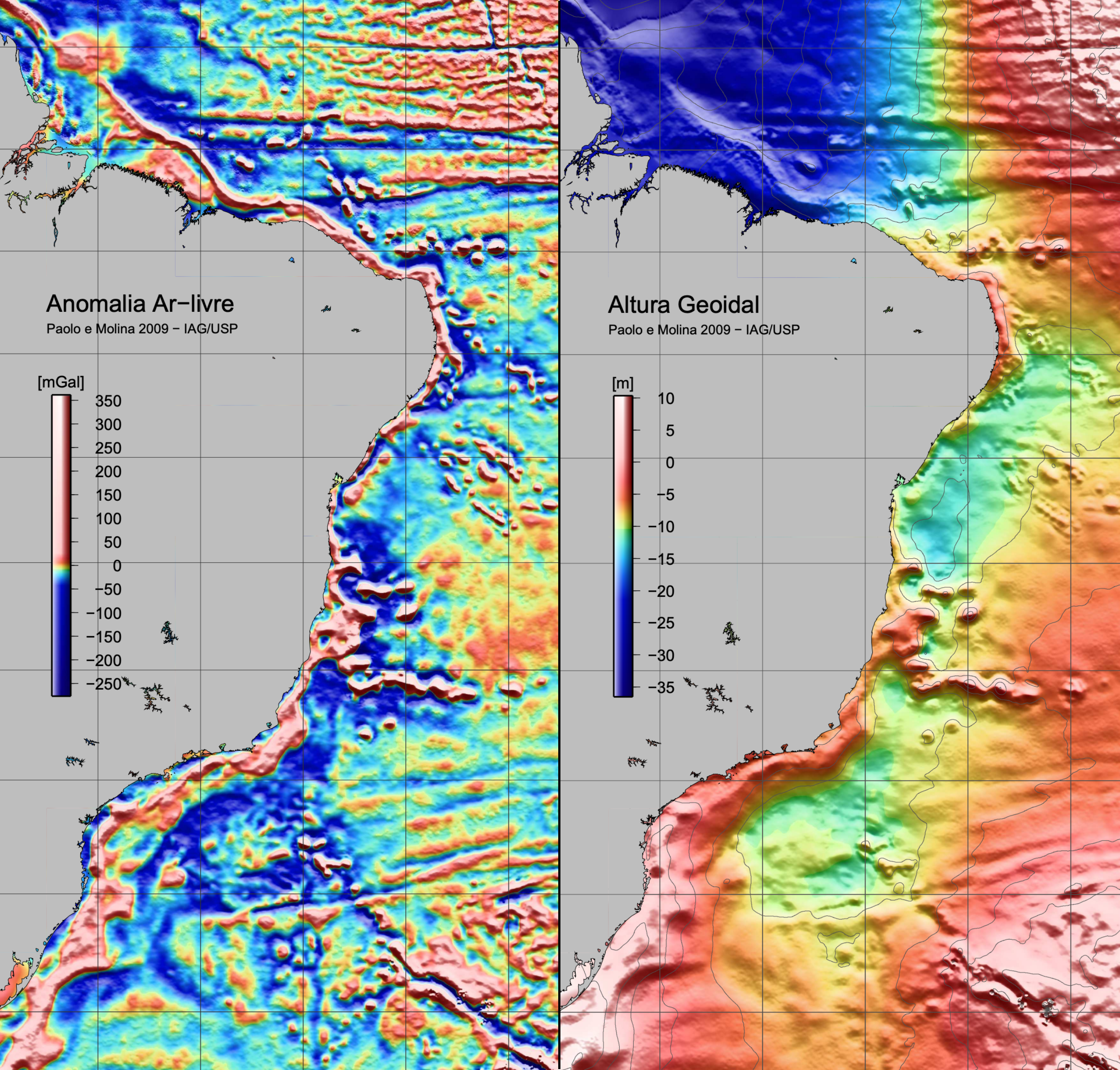
Marine gravity field: Satellite-derived sea surface gradient and shipborne gravimetry for an integrated marine gravity field.
Integrated gravity models constructed using sea surface gradients (slopes), derived from satellite altimetry (Geosat and ERS-1), and marine gravity data from ships along the Brazilian coast: (left) free-air gravity anomaly, (right) geoid height. Unlike spectral methods, a deterministic approach, the least squares collocation method, a stochastic approach, presents a lower content of high-frequency noise in the predicted gravity anomalies. Checkout the paper in J. of Geodynamics